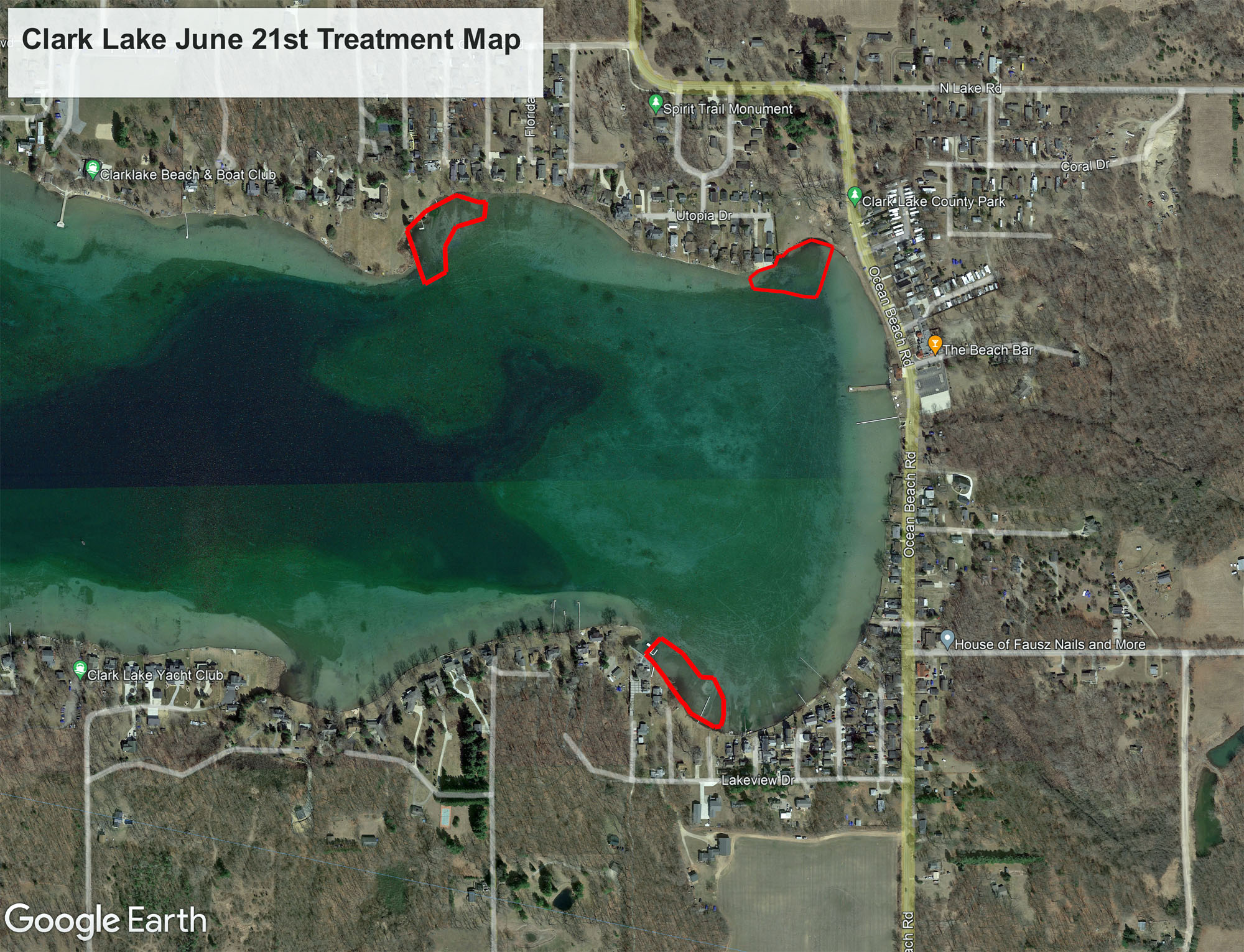PLM, the company contracted to treat invasive aquatic weeds, surveyed the lake last week. They found only three pockets of invasive weeds, all in the east end of the lake. They will treat these areas on Wednesday, June 21st. PLM states “the product we will be using has a one day swimming restriction posted on the sign, but the EPA label has no restrictions as far as people, pets, etc., being in the water.”

Clark Lake has been engaged in a battle to defend itself from this invasive species. Left alone, these weeds can take over. Lakes that didn’t act paid the price in diminished recreational uses, harm to natural habitat, and reduction in property values.
After treatment, the defeated weeds collapse and typically sink to the bottom. Invasive or native weeds growing close to the surface can be decapitated by props and wash ashore. The products used for treatment affect only invasive weeds.
To keep Clark Lake in excellent condition, vigilance is the answer. That’s the conclusion of the Invasive Species Committee, made up of fellow Clark Lake residents who live on the lake. Considering the dour alternative, this program is a win.
The special assessment district (SAD) allows for treatment wherever invasive weeds are found in Clark Lake, and provides the financial support. The SAD was recently reestablished for another 7 year period. The cost to a lakefront property owner is $59 annually, less than the previous $64 per year cost.











Happy to contribute whatever it takes to support this much-needed, valuable program to protect our priceless natural resource.
Good news! It looks like the vigilance by PLM over the past years has paid off. I’m grateful that the Clarklake community agreed to the treatment plan!